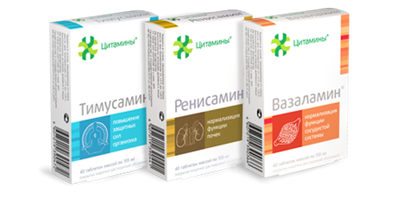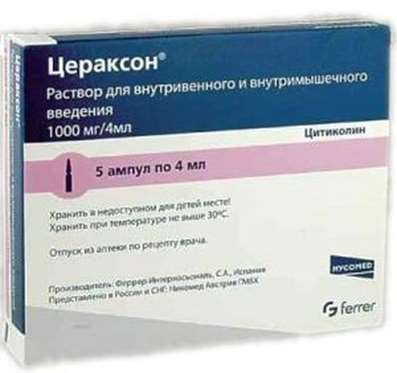Instruction for use: Telfast
I want this, give me price
Dosage form: Film Coated tablets; Film coated tablets for children
Active substance: Fexofenadine*
ATX
R06AX26 Fexofenadine
Pharmacological group:
Antiallergic agent - H1-histamine receptor blocker [H1-antihistamines]
The nosological classification (ICD-10)
J30 Vasomotor and allergic rhinitis: Allergic rhinopathy; Allergic rhinosinusopathy; Allergic diseases of the upper respiratory tract; Allergic rhinitis; Allergic rhinitis seasonal; Vasomotor runny nose; Prolonged allergic rhinitis; All-year-round allergic rhinitis; All-year allergic rhinitis; Year-round or seasonal allergic rhinitis; All-the-year-round rhinitis of an allergic nature; Rhinitis vasomotor allergic; Exacerbation of pollinosis in the form of rhinoconjunctival syndrome; Acute allergic rhinitis; Edema of the nasal mucosa; Edema of the nasal mucosa; Edema of the mucous membrane of the nasal cavity; Swelling of the nasal mucosa; Swelling of the nasal mucosa; Pollinosis; Permanent allergic rhinitis; Rhinoconjunctivitis; Rhinosinusitis; Rhinosinusopathy; Seasonal allergic rhinitis; Seasonal allergic rhinitis; Hay rhinitis; Chronic allergic rhinitis; Allergic diseases of the respiratory tract
J30.1 Allergic rhinitis caused by pollen of plants: Hay fever; Hay fungus; hay fever; Hypersensitivity to pollen of plants; Polyposis allergic rhinosinusitis; Seasonal pollinosis; Seasonal rhinitis
Composition
Tablets, coated with a film membrane 1 tab.
active substance: Fexofenadine hydrochloride 120 mg; 180 mg
Auxiliary substances: croscarmellose sodium - 24/36 mg; Pregelatinized starch - 120/180 mg; MCC - 133 / 199.5 mg; Magnesium stearate - 3 / 4.5 mg
Membrane film: hypromellose (E15) - 2.84 / 4.26 mg; Hypromellose (E5) - 1.89 / 2.835 mg; Povidone - 0.51 / 0.765 mg; Titanium dioxide (E171) - 2.025 / 3.038 mg; Silicon dioxide colloidal - 0,73 / 1,095 mg; Macrogol 400 - 3.94 / 5.91 mg; Iron dye oxide (pink mixture *) - 0.025 / 0.038 mg; Ferric oxide dye (yellow mixture **) - 0.04 / 0.06 mg
* Pink mixture of iron oxide dye is a mixture of iron oxide red (E172) and titanium dioxide (E171)
** yellow mixture of iron oxide dye is a mixture of iron oxide yellow (E 172) and titanium dioxide (E 171)
Description of dosage form
Tablets of 120 mg: oblong, biconvex tablets, covered with a film shell of light pink color, on one side - engraving "012", on the other - stylized "e".
180 mg tablets: oblong, biconvex tablets covered with a filmy coating of light pink color, on one side - engraving "018", on the other - stylized "e".
Pharmachologic effect
Pharmacological action - antihistamine.
Pharmacodynamics
Fexofenadine (a pharmacologically active metabolite of terfenadine) is an antihistamine with selective antagonistic activity to H1 receptors without anticholinergic and blocking α1-adrenergic action receptors. In addition, fexofenadine does not have a sedative effect and other effects from the central nervous system.
In human studies, the antihistamine effect of fexofenadine, ingested 1 or 2 times a day, is manifested in 1 hour, reaches a maximum after 6 hours, and lasts for 24 hours after its administration. Even after 28 days of fexofenadine, there was no development of tolerance to the drug. With a single intake of fexofenadine, a dose-dependent increase in antihistamine effect is observed with increasing dose from 10 to 130 mg. Using the same model of antihistamine action, it was found that a dose of at least 130 mg was necessary for a constant action for 24 hours. Maximum suppression of blistering and hyperemia of the skin is more than 80%.
In patients with seasonal allergic rhinitis who received fexofenadine 240 mg twice daily for 2 weeks, the magnitude of the QT interval (QTc) did not differ from that of placebo.
Also, there were no changes in the QTc interval when fexofenadine was taken by healthy volunteers at 60 mg twice a day for 6 months, 400 mg twice a day for 6.5 days, and 240 mg / day for 1 year compared to the interval QTc when taking placebo.
Even with a plasma concentration 32 times higher than the therapeutic concentration in humans, fexofenadine had no effect on the potassium channels of delayed rectification in the human heart.
Pharmacokinetics
When ingested quickly absorbed, Tmax is approximately 1-3 hours. The average value of Cmax when taking 120 mg / day is approximately 289 ng / ml, and when taking 180 mg / day - about 494 ng / ml.
Fexofenadine binds to plasma proteins by 60-70%.
Fexofenadine is slightly metabolized in the liver and outside it, which is confirmed by the fact that it is the only substance found in significant quantities in urine and feces of humans and animals.
At the course of taking the drug, the curve of excretion of fexofenadine from the plasma decreases bi-exponentially, and the final T1 / 2 is 11-15 hours.
Pharmacokinetics with a single and course of fexofenadine (up to 120 mg twice a day inwards) is linear. A dose of 240 mg twice daily gives slightly more than a proportional (by 8.8%) increase in AUC, which indicates that the pharmacokinetics of fexofenadine is practically linear in the dosage range of 40 to 240 mg / day.
According to the data available to date, most of the dose taken is unchanged in the form of bile, and up to 10% of the drug is excreted in the urine.
Indications for Telfast
Seasonal allergic rhinitis (to reduce symptoms) - 120 mg tablets.
Chronic idiopathic urticaria (to reduce symptoms) - 180 mg tablets
Contraindications
Hypersensitivity to any of the components of the drug;
pregnancy;
The period of breastfeeding;
Children under 12 years.
With caution: chronic renal and hepatic insufficiency, as well as elderly patients (lack of clinical experience in this category of patients); Cardiovascular diseases, incl. And in the anamnesis (antihistamines can cause palpitation and tachycardia, see "Side effects").
Application in pregnancy and breastfeeding
There is insufficient data on the use of fexofenadine in pregnant women. Limited studies in animals showed no evidence of adverse effects on pregnancy, intrauterine development, childbirth and postnatal development. Fexofenadine should not be used during pregnancy.
Data on the content of fexofenadine in breast milk when it is taken by breast-feeding women are not available. However, when taking terfenadine, it was observed that it penetrated the breast milk of lactating women. Therefore, the use of fexofenadine during the period of breastfeeding is not recommended.
Side effects
In placebo-controlled clinical trials, the most common adverse events (≥1 - <10%) were headache (7.3%), drowsiness (2.3%), dizziness (1.5%) and nausea (1.5 %). When fexofenadine was taken, the frequency of the above adverse effects was similar to that of placebo.
In placebo-controlled studies with a frequency of less than 1% (equally with fexofenadine and placebo) and post-marketing use of the drug, weakness, insomnia, nervousness were noted; Sleep disturbances or unusual dreams (paronies), such as nightmares; Tachycardia, palpitations; diarrhea.
In rare cases (≥0.01 - <0.1%), exanthema, urticaria, pruritus and other hypersensitivity reactions such as Quincke's edema, difficulty breathing, shortness of breath, skin flushing, systemic anaphylactic reactions were observed.
Interaction
With the combined use of fexofenadine with erythromycin or ketoconazole, the concentration of fexofenadine in plasma increases by 2-3 times, but this is not associated with a significant lengthening of the QTc interval. There were no significant differences in the incidence of adverse effects in the use of these drugs in monotherapy and in combination. Studies in animals have shown that the aforementioned increase in plasma concentrations of fexofenadine is probably associated with an improvement in fexofenadine absorption and a decrease in its biliary excretion or secretion into the lumen of the gastrointestinal tract.
The interaction between fexofenadine and omeprazole is not observed.
Does not interact with drugs that are metabolized in the liver.
Taking antacids containing aluminum or magnesium 15 minutes before fexofenadine intake leads to a decrease in the bioavailability of the latter as a result of binding in the gastrointestinal tract.
Dosing and Administration
Inside, before eating.
Seasonal allergic rhinitis: the recommended dose for adults and children 12 years and older is 120 mg once a day.
Chronic idiopathic urticaria: the recommended dose for adults and children 12 years and older is 180 mg once a day.
Patients at risk. Studies in special risk groups (elderly patients, with renal and hepatic insufficiency) showed that for patients in these categories, there is no need for correction of the dosing regimen.
Overdose
Symptoms: dizziness, drowsiness, dry mouth. Healthy volunteers took single doses up to 800 mg and dose doses up to 690 mg twice a day for 1 month or 240 mg twice a day for 1 year without any significant undesirable effects compared to placebo. The maximum tolerated dose for fexofenadine is not established.
Treatment: gastric lavage, the appointment of activated charcoal, if necessary - symptomatic and supportive therapy. Hemodialysis is ineffective.
Special instructions
It is recommended that the time interval between taking fexofenadine and antacids containing aluminum or magnesium hydroxide is at least 2 hours.
Influence on the ability to drive a car and perform work that requires concentration. When taking the drug, it is possible to perform work that requires a high concentration of attention and speed of psychomotor reactions (except for patients who have an unconventional reaction). Therefore, it is recommended to check the individual response to fexofenadine before taking these activities.
Release form
Tablets, film-coated, 120 mg and 180 mg. For 10 tab. In a blister of PVC / aluminum foil. 1 blister is placed in a cardboard box.
Manufacturer
Sanofi-Aventis Deutschland GmbH, Germany. Brüningstrasse, 50, D-65926, Frankfurt am Main, Germany.
Name and address of the manufacturer: 1. Sanofi-Aventis USA LLS, USA. 10236, Marion Parle Drive, Kansas City, Missouri, 64137, USA.
Issuing control: Sanofi-Aventis Deutschland GmbH, Germany. Brüningstrasse 50, D-65926, Frankfurt am Main, Germany.
2. Sanofi-Synthelabo Ltd., United Kingdom. Edgefield Avenue, Faudon, Newcastle upon Tin, Tin & Wea NE3 3TT, United Kingdom.
Conditions of leave from pharmacies
Without recipe.
Storage conditions of the drug Telfast
At a temperature not higher than 25 ° C.
Keep out of the reach of children.
Shelf life of the drug Telfast
3 years.
Do not use after the expiry date printed on the package.

 Cart
Cart





